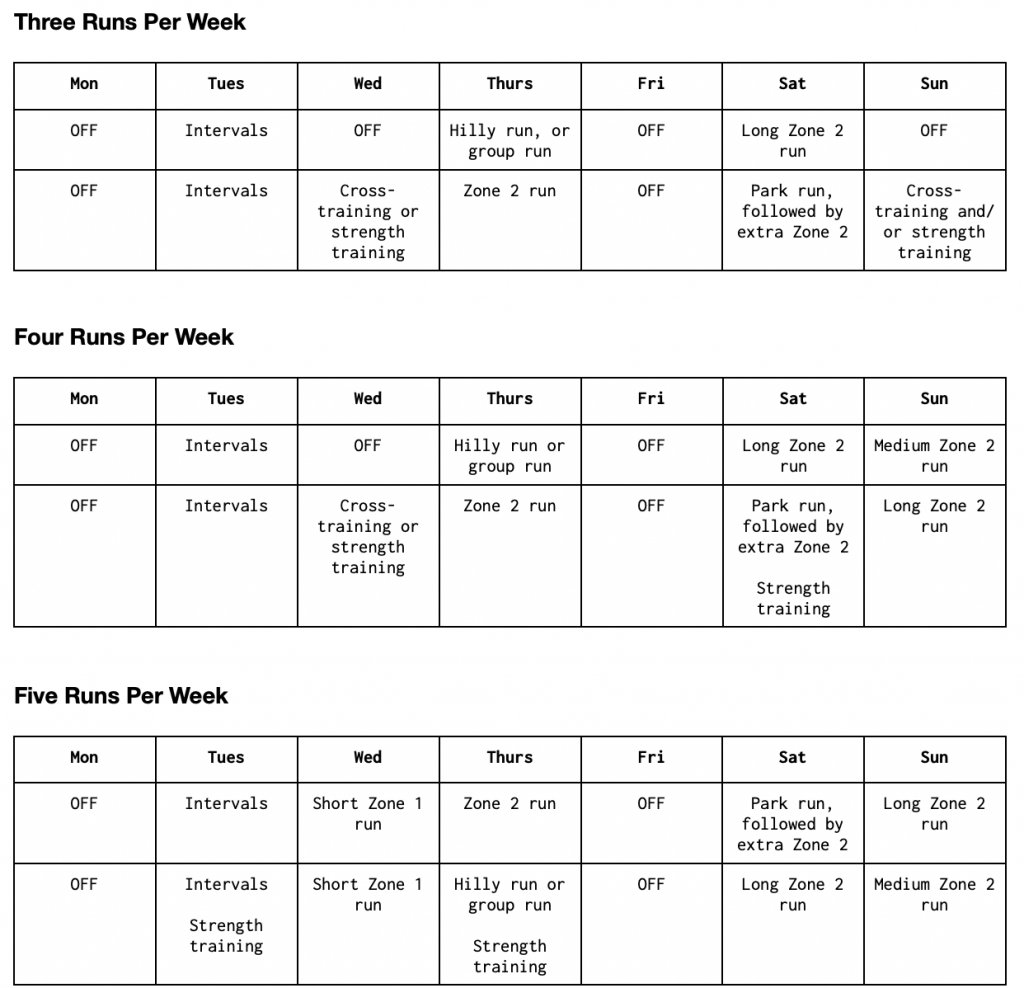How you structure your training within a week can have an impact on your ability to complete your sessions well.
For example, planning your interval session the day after your long run is probably a bad idea, as you’ll be too tired to hit the intensities necessary to see the intended fitness improvements.
In most training weeks, there will be 2-3 key sessions you want to include, and make sure you execute well.
One key priority will be a longer endurance run, performed at a lower intensity. You’ll want to be relatively fresh for this run, so that you’re not at risk of cutting it short. Fitter runners will be able to do a long run the day after a harder training session, but in many cases, you’ll want to have an easy day before your long run.
Your other key priorties will be to include 1-2 medium or high-intensity sessions. Again, you’ll want to be feeling relatively fresh for these so that you can hit and sustain the target intensities.
Around these priority sessions, your other runs will likely all be short/medium, low-intensity runs. For these it doesn’t matter quite so much if you’re feeling a bit tired.
In order to structure your training week well, you can follow these basic rules.
Basic Rules
- Start by planning your long run, as this is likely to be the hardest run to find the time to fit within your week.
- Plan your high-intensity and recovery days in blocks. So that each high-intensity day is preceded by a recovery day (either a day off or a short Zone 1 run).
- Make sure you have 2-3 recovery days each week.
I’ve included some example training weeks below, which fit nicely around the usual mid-week club sessions:

Written by Dr Emma Wilkins (physiology consultant and coach at High North Running).
